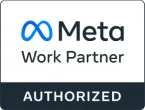When leading a team as a manager of the development team, being a product manager or project manager in a software development company, project management software is your key to organization and success. There are two main pillars when using Project Management Software: transparency within the business or development team, and the development cycle being visualized and actualized. (Ignoring its use for cost analysis and keeping within a budget, which will be kept for another article) These two uses will help leaders and team members identify bottlenecks within the development cycle and development team.
Before learning about these 4 main pillars, learning about what Project Management Software is and when to use it is extremely important. Project Management Software is a tool you can use online or on your computer to help you organize your projects, tasks, deliverables, time tracking, planning, resource management, GANTT Charts, reporting, dashboards, collaboration, etc. With all these uses in mind, when to use it becomes irrelevant, because there is almost always a use for it within most businesses.
There are many major Project Management Softwares available such as @Hansoft, @Monday.com, @Trello, @Clickup, @Asana, and countless more. It is up to you to decide which one you want to use, but for my team, we use Hansoft for the development team and Monday.com for other needs. Do your due diligence and research into which one and make sure it fits your team and requirements. If you need to plan for scalability, make sure it can scale easily with your team and fits your business niche. If you already have Project Management Software, you can always transition to one suited to your team, as we did at VR Vision.
This software will make your development cycle become extremely transparent and help you find bottlenecks in this cycle. The development is the core process to the development team; making it more transparent allows for more collaborative thinking with the team, in turn allowing the team to identify bottlenecks. Every development cycle will be unique to your business, but the core steps are the same. The typical cycle can look similar to the one I created at VR Vision, and bottlenecks typically can be found between the development and review stage, or the review to the testing stage. The collaborative thinking mentioned is having frequent kaizen sessions with your team and provoking thoughts. Each team member is unique and important to the team overall, and they will bring their own thoughts into how the development cycle can be improved. Remember, Kaizen is about bringing change for the better, and if one of your developers is experiencing bottlenecks at a stage, collaborative thinking will bring improvements.
Inside the software, another way to reach the best transparency is leveraging Kanban Boards or workflows. Looking at the example Kanban board, you can visually see each task in its stages and how far the team is along in the cycle/sprint: Todo, Scoping, Development, Feedback, Testing, Review, Done, Blocked. If you see tasks keep sitting on Review Stages, or Testing stages, there is one of your bottlenecks. If tasks sit on scoping for too long, it means the tasks are less understood and more scoping / researching is required. Of course, if an item ever reaches a blocked stage, the best practice is to immediately form an emergency team meeting and discuss the next steps. Items should never sit in blocked, and by recognizing this and comparing this best practice to your own, you will identify more bottlenecks.
Once you have transparency throughout the development process and cycle, it is time to kaizen your cycle. This cycle needs to be visualized and there is no perfect cycle or visualizer. You can visualize it using the typical cycle chart, a Kanban board, or using dashboards that explore every piece of the cycle. A typical cycle chart can take an hour or two to make and needs to be general enough for it to apply to every aspect of your teams such as UI, front-end development, back-end development, art team, CG team, etc. Each of these teams will have unique steps, but creating a general chart that applies to each team, will bring them together and allow them to visualize their own and each other’s processes.
A Kanban board, as talked about previously, is another way to visualize the cycle in a more Lane and column style, where each item is applied to specific Lanes and move across the columns. Each lane will be a team, and each column will be similar, yet titled differently. These are extremely easy to make but can create bottlenecks by having too few, or too many columns. An example of these Lanes can be seen and should undergo Kaizen as your team shifts and grows, allowing actualization to occur. Bottlenecks can be found by placing Work in Progress Limits on your columns.
Here is an example:
If any items are getting stuck in Feedback, and your limit is set to 5, you may need to adjust your limits or have a team discussion to understand why items are sitting in there for too long. Team members assigned to providing feedback to items may not process these items efficiently enough or the WIP Limit may be too small. Another common issue is WIP Limits are too liberal on the main development column. Team members can only work on so many tasks at once in a period, and having a liberal limit, allows them to spread too thin on tasks and they will not be completed on time.
Dashboards are extremely important when using Project Management Software and are the cherry on top of the pie. They help visualize every piece of your business and development, even to those who may or may not understand all aspects of it. There is no such thing as too many dashboards and you should be improving them and add more as your team changes and grows. An amazing aspect of dashboards is that they will visually show the bottlenecks without them being realized. Comparing estimated vs non-estimated tasks, estimates over time, Cumulative Flow Diagrams, burndown charts, estimated vs actuals, are some of many examples that will visualize and identify bottlenecks.
Sharing these dashboards with your team is also very important so they can understand them and provide feedback. Having team meetings around these dashboards weekly (especially if a majority work from home) will keep an open line of communication and bring about more thought leadership. During these meetings, the teams will have the opportunity to analyze and scrutinize the dashboards, which in turn bottlenecks will reveal themselves.
Bottlenecks in a development cycle are inevitable, but minimizing them can fairly easy once they are discovered. Project Management Software will always reveal them, and by minimizing bottlenecks, it will prevent future issues, prepare you for the worst, and have your team working at its best.









